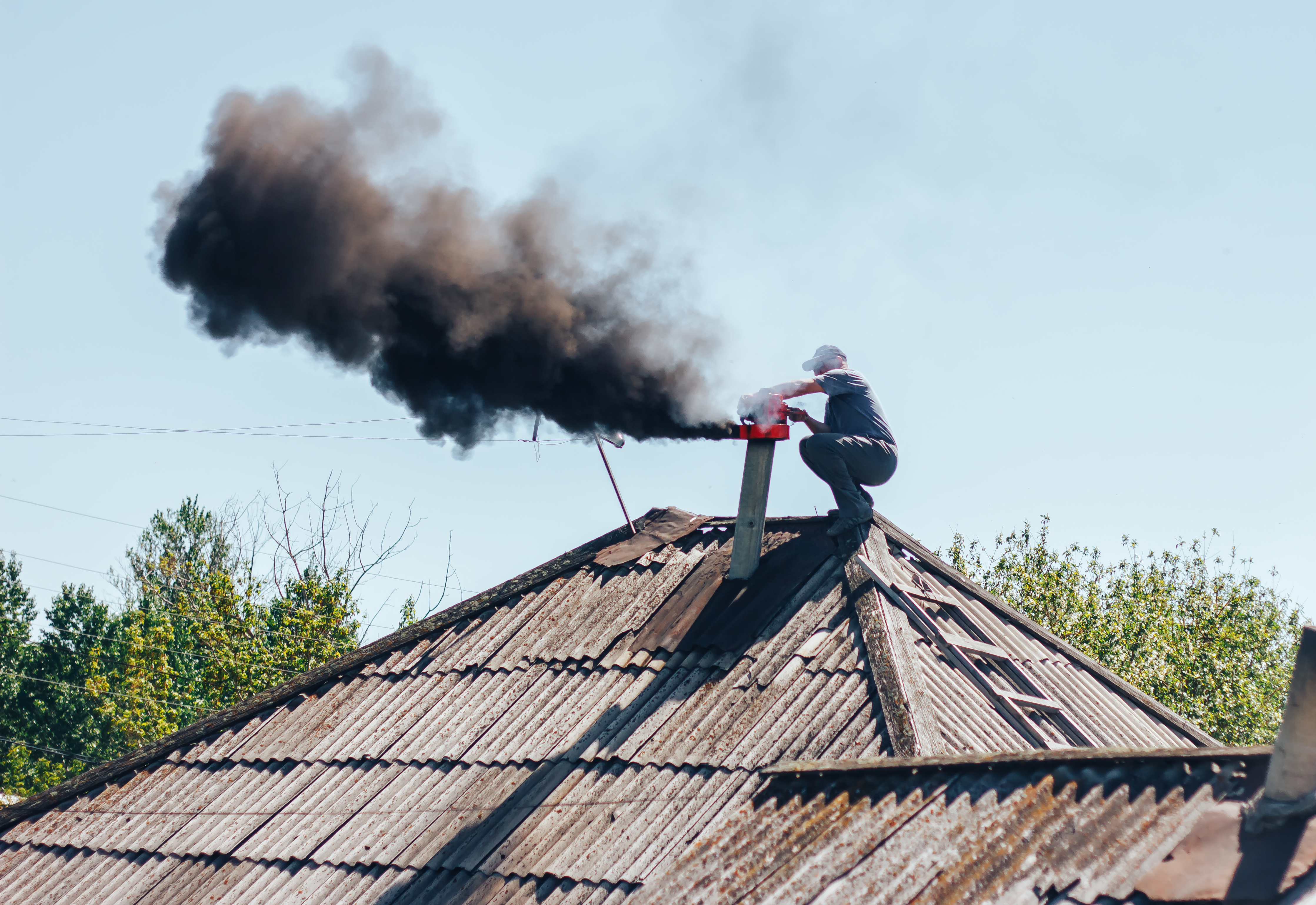
Fireplaces are excellent additions to homes. Like all things though they come with the good and bad. Here are some pros and cons of adding a fireplace to your basement.
1. Pro: Cheap Heat
Wood and gas fireplaces are very cheap ways of heating your home. They can run without any use of electricity. That means any time you choose to use your fireplace, you cut your electricity bill and exchange it for something much more manageable.
Not to mention, by installing and using a fireplace in your basement all the heat pumped into your basement from this fireplace will transfer to the upstairs. That means that you will have to heat any floor above the basement less.
Gas in America is always cheaper to use than electricity. In general, it costs about 40 dollars less to run gas than electricity. Gas is better at heating things than electricity is. It also gives off fewer substances.
If you install a wood fireplace then you will have to deal with soot. Not a big problem, just a little extra to clean. Wood is still cheaper than electricity in many areas. The colder it gets though the more wood you will have to go through.
With that in mind, in some places, wood is actually the more expensive option when compared to electricity. So do your research first. Both on the cost of wood, how well your wood fireplace will heat your home, and how cold it gets on average.
2. Pro: Aesthetically Pleasing

No matter which fireplace you choose to install, you will have a great aesthetic. Fireplaces are longed for because of this. Their timeless cozy feeling leaves us all longing for more of this comfort.
Wood naturally has the best aesthetic. The genuine heat, slow crackle of wood, and sound of the flames create one of the most sought-after scenes in the minds of fireplace enthusiasts. The idea of this is what drives a lot of people to consider a wood fireplace.
Gas has many similar features. You can hear the flames and feel the warmth. The fake logs aren’t bad, and they are always being improved. However, if you look closely and clean the logs, it is obvious that they are fake.
This isn’t such a big problem because you still get the glow, the heat, and a few of the sounds.
Electric fireplaces offer some aesthetic benefits, just not as many. You get heat and the sound of a running fan. These come with fake logs, and fire lighting. Nothing fancy, and obviously not real.
This hardly matters though if you have your nose buried in a book or there’s a good conversation going on. No wood crackle, and no smell, but a kind of modern feeling that the other two don’t offer.
3. Pro: Good Smells
The only option that offers classic wood-burning smells is the wood fireplace. Because there are so many varieties of wood there are endless aromas that could waft through your home.
Do you like pine? Burn pine. Would you rather have applewood? Burn applewood. You get to choose how your home smells with this fireplace. That’s a pretty big plus because it’s unique to the wood fireplace.
This wood smell is classic and cherished by those who have a wood fireplace. It will waft through your home and brighten up any day. It helps that it’s your choice.
If you convert from a wood fireplace to an electric fireplace there might be some residue leftover in your chimney that you could smell. However, that is a sign that you need to have your chimney cleaned.
You can also melt wax on some electric and gas fireplaces. This is a good smell, just not the classic wood-burning smell.
4. Pro: Electricity Free

Wood and gas fireplaces are free from the grid. This provides several advantages. We talked about how this will cut your electric bill, but there are several others.
Chief among them is that they will work even when the power is out. Wood is especially self-contained. A wood fireplace will always work. No matter what. All you need to do is supply it with things to burn.
It is possible to use your gas fireplace in a power outage too. If your gas fireplace works with a thermostat you may run into some problems. This is easily remedied though.
So next time your power goes out you won’t even notice the cold if you have a wood or gas fireplace.
Another lesser perk of this is for wood, it requires a little bit of know-how to get the fire going. Not much mind you, but enough for you to feel like you accomplished something when you get it going.
5. Pro: Easy To Add Multiple

If you already have the hook-ups for a gas fireplace it doesn’t require much to install another one. Maybe you want one in every room to eliminate your electric heating. Totally doable. At that point, it might cost you an arm and leg to install so many, but totally doable.
You can stack many fireplaces into just one chimney. Well, two wood fireplaces can share one chimney. You can have many more with gas fireplaces. This is done by adding flues. Relatively inexpensive when compared to the cost of adding a whole new chimney. Costs range from about $1,500 to $5,000.
Adding multiple wood fireplaces is more complex and may require whole chimneys to be installed. That depends mostly on where you want to install it in your basement. If it lines up with the chimney then it isn’t that hard.
6. Con: Expensive To Install
Adding a fireplace to a basement can get pricey. Especially if you are adding a chimney. Putting in a fabricated metal fireplace will cost between 1,000 and 3,000 dollars. Adding a wood fireplace (also called a masonry fireplace) will cost around 5,000 dollars. Adding a chimney will cost about 6,000 dollars more.
So, it gets expensive fast when talking about installation. Prices will vary widely depending on the kind of fireplace you install along with the cost of labor.
If you don’t already have the required hook-ups for a gas fireplace it will cost more too. How much more is hard to say. It depends on how much piping needs to be installed.
And then there is all the clean-up you will have to worry about. If your basement has hard flooring then cleaning could be as simple as some sweeping.
If your basement is carpeted then that will also drive up the costs of installation.
7. Con: Expensive Maintenance

Fireplace maintenance can get pretty expensive.
Wood fireplaces require that you remove leftover debris. Mostly creosote. If you do this regularly a cleaning could cost as little as fifty dollars. The more debris a chimney has the more expensive the cleaning up. Average cleaning costs are about 250 dollars. They can cost up to 800 though if it has been years since the last chimney cleaning.
Gas fireplaces should be serviced once a year to catch any problems. A typical service should cost about 100 dollars. However, if any parts need to be replaced or any major repairs need to happen then the costs will climb very fast.
Electric fireplaces need the least maintenance. Most of the servicing that an electric fireplace needs can be done by yourself. Basically, all it needs is some dusting. If it starts making weird noises or smells however then you better call someone to take a look. This will cost between 200 and 500 dollars. Again, this depends on location and what needs to be done.
8. Con: Bad Odors
For all the good smells a wood fireplace can bring wafting through your house, gas and electric fireplaces can bring some pretty nasty smells as well.
If a gas or electric fireplace is malfunctioning then you can expect some pretty gnarly smells to come out of your fireplace. This will range from the smell of gas to the smell of burning plastic or melting rubber.
These smells mean you should turn your fireplace off immediately and call a professional. These are serious indications of a problem.
So for as bad as the smells are, in the end, they are great warning signs if you pay attention to them.
9. Con: Limited Efficiency

A wood fireplace provides a great ambiance, wonderful smells, and a timeless escape from reality. They also provide a lot of heat.
Unfortunately, most of the heat that a wood fireplace provides is lost through the chimney.
About 20% of the heat a wood fireplace creates is actually felt inside your house. So a whopping 80% is lost to the world. That’s a pretty astonishing number.
On the bright side though, there are certain inserts and types of wood fireplace inserts and add-ons designed specifically for increasing the amount of heat that makes it into your home. The downside is that these cost more money.
Luckily these can be pretty inexpensive and can save you a lot of money. These range from special fans that cost less than 100 dollars to inserts that cost about 2000 dollars. So your fix depends on your needs and your budget.
